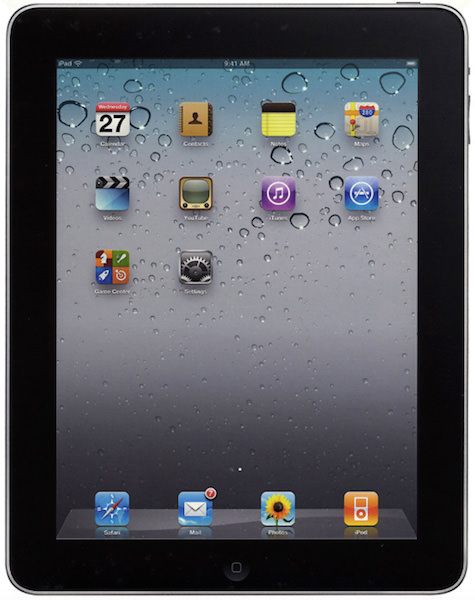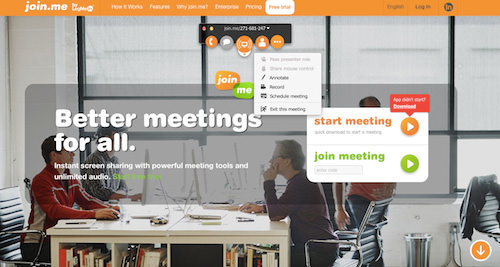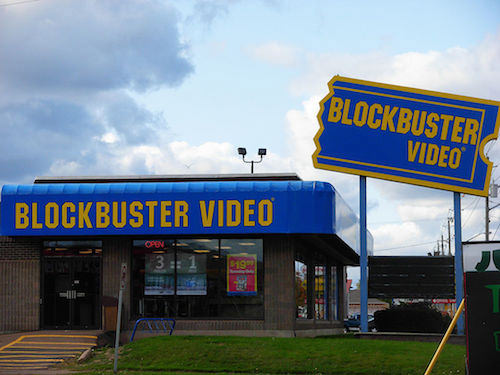5 Characteristics Of An Innovation
The “diffusion of innovations” theory of communications expert and rural sociologist Everett Rogers attempts to identify and explain the factors that lead to people and groups adopting innovations (new ideas and technologies). Design teams that account for both usability and how people adopt innovation stand a much greater chance of having users accept and use their products.
The diffusion of innovations is a complex process; design teams can use their knowledge of the theory to create a road map for how they will address critical factors in the design and marketing of their product.
I covered the types of adopters and the steps in the process of adoption in the first article of this series. This second article presents the five characteristics of an innovation that determine its use. According to the diffusion of innovations theory, how well an innovation addresses these characteristics will determine people’s long-term adoption of an innovation. Design teams can address many components of these characteristics.
Characteristics Of An Innovation
Individuals do not automatically adopt new products. They make a conscious decision of whether to use a particular one. That is, their decision to adopt an innovation is deliberate. This is the third step in the process of adopting an innovation, covered in the first article. Design teams must proactively address this step if they want individuals to decide on long-term use of their product.
The diffusion of innovations theory identifies the following five characteristics that determine people’s use of an innovation.
Relative Advantage
Relative advantage measures how improved an innovation is over a competing option or the previous generation of a product. Potential users need to see how an innovation improves their current situation. Improvements can be in one or many of these areas:
- better service,
- consolidation of multiple functions into one tool,
- decreased need for supplies and equipment,
- empowerment of users,
- improved interface,
- increased customizability,
- increased longevity,
- increased productivity,
- reduced user effort,
- reduced environmental impact,
- saving of money,
- saving of space or storage,
- saving of time.
In the 1980s and early ’90s, computer word-processing programs WordStar and WordPerfect demonstrated relative advantage over existing products. Most offices used typewriters, which took up a lot of space, performed only one function and required servicing, supplies (type ribbons, whiteout, etc.) and parts on a regular basis (they were also pretty loud).
As computers became more prevalent, WordStar and WordPerfect freed users from typewriters. The relative advantage was obvious. The word-processing programs didn’t require any additional physical space aside from the personal computer, which already did a number of other office tasks; they reduced the need for ink and correction tape; documents could be easily edited prior to printing; and files could be saved and transported for editing on other computers using floppy disks. Soon, typewriters were being phased out of offices and replaced with these computer word-processing programs.

Relevance to your design team
Your design team will need to address relative advantage in multiple ways. Let’s face it: If relative advantage isn’t inherent to your product, then it isn’t an innovation, and it might not be a venture worth pursuing at all. Your team should identify the potential relative advantage of your product in the planning stages of development. From that point on, your team should sharpen and enhance any relative advantage that your product has over the products of potential competitors.
Market research, UX research’s awkward cousin, should inform the underlying logic that drives your innovation’s purpose. Have you identified the demand for your innovation? What competing products currently exist? Highlighting the issue that your innovation addresses and how it does so are good ways to start investigating where your innovation’s relative advantage should lie.
You will need to be explicit about the relative advantage of your product in your marketing. How is your product an improvement over an existing product? How does it address an unmet need? Your design should clearly accomplish both of these things. Your marketing materials should clearly show how your product gives users an edge over competing products.
Your design team will need to conduct user research to back up your claims. For example, if you are going to say that your product is easier or more efficient than a competing product, then you will need data to back up this assertion. Have you tested users of your product against users of a competing product? Do users of another product find it lacking in a way that your product addresses? Does your product save people money or reduce their reliance on multiple products by consolidating a number of functions? Prove it, and then tout that fact in your advertising.
Compatibility
Compatibility refers to the level of compatibility that an innovation has with individuals as they assimilate it into their lives. Potential adopters need to know that your innovation will be compatible with their life and lifestyle. If an innovation requires a huge lifestyle change or if the user must acquire additional products to make your innovation work, then it is more likely to fail. Innovations meet with the greatest success when users are able to seamlessly adopt them — when they replace an existing product or idea, for the better.
Apple’s iPad is an example of an innovation that had a high level of compatibility with potential users’ lives when released. Many users were able to replace products they were currently using when the iPad was released, such as smartphones and laptop computers to check their email, to read books, magazines and blogs and to view videos online.
Relevance to your design team
Your design team needs to understand the infrastructure they are designing for, as well as what the planned improvements to the infrastructure will be. You wouldn’t design an electric-powered innovation for a community that doesn’t have access to, or believe in, electricity. You need a deep understanding of the conditions that your innovation will be met with upon release. Answer the following questions when thinking about your innovation’s compatibility:
- How will your innovation fit into users’ lives?
- What shifts in behavior will need to occur for your innovation to be adopted?
- What additional products will be required for your innovation to succeed (for example, a high-speed Internet connection, a mobile phone plan with data, gasoline)?
- What existing products does your innovation replace?
- How does your innovation fit with potential adopters’ mental model, beliefs and attitudes regarding the issue your innovation will address?
The questions above are not comprehensive. They are meant to highlight a design team’s need to be aware of the characteristics of adopters as thoroughly as they are aware of their own innovation’s characteristics. To be clear, the success of your innovation will depend on your team ensuring that the innovation aligns with potential users’ beliefs, attitudes, values and behaviors.
Ensuring compatibility doesn’t mean that your innovation can’t be cutting- or bleeding-edge, just that you have to know things are moving in the direction your design is taking them. Let’s examine the iPad’s success once again, noting how key factors related to compatibility were in place to help ensure the product’s success.
The iPad came at the right time in the evolution of people’s beliefs, attitudes, behaviors and technology. Many individuals and businesses had reached a stage where they believed that new technologies to simplify daily activities were constantly emerging (belief), and that this is a good thing (attitude). Individuals were already using laptop computers and smartphones to surf the Web and to make digital transactions while away from their desktops (behavior). Wi-Fi Internet access was nearly ubiquitous among businesses and households in urban and suburban areas, which allowed the iPad to function as a useful tool in most areas (technology); also, mobile phone technology presented a more advanced option for users who were willing to pay for constant access to the Internet. Lastly, enough adopters were willing to spend money on these types of technologies to show that it was a viable option to later adopters (behavior). These factors aligned to create the perfect timing for the iPad to be compatible with adopters’ lives.

Apple’s extensive knowledge of their market led to the iPad’s success. The iPad would most likely not have had the same success if it had been released prior to ubiquitous Wi-Fi or the mass availability of digital movies and music. Your design team should have as strong an understanding of your potential market and what conditions need to be present to ensure the compatibility of your innovation with adopters’ lives. If the success of your innovation depends on the availability of another product, then you’ll need to know that this product is, or will be, common enough that it won’t interfere with potential adopters’ ability to use the functions of your product.
Complexity Vs. Simplicity
Complexity or simplicity refers to how difficult it is for adopters to learn to use an innovation. Complexity slows down the gears of progress. The more complex an innovation, the more difficult it will be for potential adopters to incorporate it into their lives. Potential adopters do not usually budget much time for learning to use an innovation. The more intuitive an innovation, the more likely it will be adopted.
An Oreo cookie-separating contraption is an example of making something too complex to be useful. Even if people felt they needed a machine to separate their Oreos, the level of effort required to use such a device would be prohibitive to adoption. Potential adopters would need to read and reread an instruction manual to ensure they are setting it up correctly. This machine is another illustration of the characteristic of compatibility. The machine’s size makes it incompatible for potential adopters who do not have an entire room to dedicate to an Oreo-separating machine. A handheld or pocket-sized version of this innovation would be much more likely to meet with success.
Relevance to your design team
Your team should design with simplicity in mind. Scrutinize every detail of your product to ensure alignment with the purpose of your innovation. High tech should not automatically mean a high learning curve. Conduct usability testing on your product as a standard practice. Usability test findings have a few clear applications in this regard:
- Iterate on the design of your product. Usability test findings should inform those iterations. Address workflows that users have struggled with, clarify terminology that users have found unfamiliar, and present information in a way that aligns with users’ mental model.
- If your team is unable to address the usability issues that users have identified, then clarify these issues through FAQs, tool tips, walkthrough videos and other learning material.
- If your innovation is complex or has standard and advanced settings, a happy medium is obtainable. “Quick start” or automatic set-up is an example of how many firms have simplified complicated innovations. If you purchase a new television or computer, it will most likely come with a single sheet of paper that describes how to quickly set up the product for basic use. Basic use is good enough for most people. A longer manual on how to manipulate advanced features is also included or made available as a downloadable PDF. This allows power users to take advantage of the bells and whistles.

Trialability
Trialability describes how easily potential adopters can explore your innovation. Trialability is critical to facilitating the adoption of an innovation. Potential users want to see what your innovation can do and give it a test run before committing. This is the underlying concept of trial sizes for tangible goods, and demo or beta releases for digital goods. Potential adopters can see for themselves what life might be like once they adopt the product.
Relevance to your design team
Your team will need to make your product available to potential adopters to test drive. Digital designs have characteristics that inherently allow for trialability. There are many examples of how to accomplish this with a digital product. Sirius XM offers a 30-day trial, hoping that users realize during this period that paying the full subscription price is worth being able to continue listening to the audio channels.
You can offer a free version of your innovation with limited functionality, with the option to upgrade for access to additional features. Join.me does this effectively by offering a less feature-rich free version of its screen-sharing product. The free version of Join.me displays options that become available through a paid account (for example, “Pass” presenter role and “Share” mouse control). Users of the free product see the benefit they would derive by upgrading to a paid subscription. When users of the free version find themselves in a situation where they would like to share control of their mouse, they will think harder about the benefits of upgrading to a paid account.

You can also offer a free ad-supported version of your product, allowing users to decide whether to upgrade by paying for an ad-free option. Pandora offers its ad-supported product free of charge. Users can listen to a set number of songs, but then must listen to advertising in order to continue. If a user wants to listen to music without commercial interruption, they can upgrade to the Pandora One experience, which offers non-stop streaming music for a monthly fee.

You will need to figure out which of these methods would work best with potential adopters of your product. Survey potential users or assess what your competition is doing to gain insight into which trial format is best for your innovation.
Most importantly for trialability, ensure that the trial product you provide is high quality and represents the experience that your team wants users to have. Users will be basing their decision on it. Do not treat the free trial period as your first opportunity for user testing or gathering user feedback. You are doing more harm than good if you release an unfinished or buggy innovation that frustrates potential adopters (for free!). Releasing a hurried, unfinished trial product is the definition of self-sabotage.
Observability
Observability is the extent to which the results or benefit of using an innovation are visible to potential adopters. We covered in the first article that not everyone adopts an innovation immediately. The adopter types who come after early adopters rely on seeing members of this group using an innovation. Observability extends beyond having earlier adopters use an innovation in view of later adopters. Potential adopters of all types must clearly see the benefit of adopting an innovation and using it.
Relevance to your design team
Be aware of how potential adopters will be able to observe the benefits of using your innovation. Here are some ways you can highlight the benefits:
- Side-by-side comparison. Potential adopters are able to observe the benefits of some innovations more than others. A side-by-side comparison is good when your innovation has easily noticeable improvements over what people are currently using. For example, potential adopters on a sales floor can easily view a TV with a larger and clearer display than a smaller, less crisp TV. A crafty sales shop might display an older smaller TV directly next to newer larger ones to make the difference more obvious.
- Before and after. What will an adopter’s life look like once they start using your innovation? Showing potential adopters the positive difference your innovation will make in their lives will have a huge impact. Will there be a noticeable increase or decrease in some aspect that will result from use of your product? If your app is designed to teach someone a foreign language, you might highlight that users will learn an average of x number of words over a certain period.
- Testimonials. People really like hearing what others whom they perceive to be like them have experienced with a product. Running an ad campaign that extends across the traditional channels of advertising is important, but more important is word of mouth and online reviews by actual users. Users who are willing to write testimonials and online reviews can make a big impact by influencing potential adopters. Encourage them to rate and review your innovation on relevant websites (for example, Apple’s app store for an iOS app, Amazon if it carries your product, Angie’s List if you provide a service.).
The examples above are not comprehensive. Be creative in getting potential adopters to observe the benefits of using your innovation. Consider an approach that encompasses multiple forms of media, to increase the likelihood that potential adopters will observe the benefits of using your product.
Blockbuster And Netflix: A Fairytale Of Innovation (Sort Of)
Let’s walk through the characteristics of an innovation using streaming and mail-order video service provider Netflix as an example.
Once upon a time, let’s say 2001, there was a giant, cumbersome video rental chain named Blockbuster. With thousands of stores and tens of thousands of employees, things were good for Blockbuster. It owned the majority of the US video rental market. Blockbuster sat back and surveyed the land; life was good. What Blockbuster didn’t realize was that Netflix, a smaller, more innovative competitor, was about to pull the rug out from under it.

Netflix started up in 1997. In a period of fewer than 15 years, Netflix (with the help of Redbox) changed the video rental game to the point that Blockbuster would file for bankruptcy, and, in 2011, would cease to exist. This happened in part due to the innovative characteristics of Netflix and its products.
Relative Advantage
In 2001, Netflix users paid a monthly fee to receive mail-order DVD rentals.
Reduced effort was an obvious area where Netflix had relative advantage over Blockbuster and other brick-and-mortar video stores
Receiving and returning the product via post was more convenient for most people, who were used to receiving regular mail delivery at their home or office. Users were able to avoid late fees, which were beginning to tarnish Blockbuster’s image.
Netflix evolved in parallel with technology. Since 2001, US households having increasingly had access to high-speed Internet. In 2007, Netflix began to stream digital movies and TV shows to people’s computers. Users no longer had to wait for a rental to come through the mail. Returning the movie was no longer necessary. If you had a laptop or PC, you could access hundreds of programs instantly.
Today, Netflix offers apps that run on video game consoles, mobile phones and tablets. Users are only a few clicks away from viewing their favorite programs in any setting, on any size screen. Netflix has transformed from offering most of its products via post, which was costly and relied on a very unreliable mail service, to delivering content to users on demand. Netflix has maintained relative advantage by innovating in line with the growth of available technology.
Compatibility
Netflix has had compatibility locked down from the beginning. First, the concept of renting and watching movies and TV shows was highly compatible with the lifestyle of US residents. People were already enjoying these behaviors en masse (attitudes and behaviors). Initially, Netflix took advantage of existing infrastructure. Once high-speed Internet reached critical mass (technology), it took advantage of the medium to deliver content to users. This highlights the need for the right infrastructure to support adoption of an innovation. Users would be far less interested in streaming videos over a slow and unreliable dial-up connection.
Complexity Vs. Simplicity
Netflix took a very simple concept and made it even simpler. This is a common characteristic of a successful innovation: Take something that others already do and do it even better. The concept of renting video was not new. Netflix simplified the process: Users would create a queue of videos online, which would ship to them in their preferred order, and then they would return the videos once they had watched them.
Later, Netflix took simplicity a step further by making behavior-based recommendations to users. The system would recommend content based on a user’s ratings of titles they had watched. This positioned Netflix as an expert in the eyes of users. Netflix not only provided content, but curated and recommended user-specific content, without the user having to leave their home or pay an additional cost.
Trialability
Netflix’s model explicitly addresses trialability; Netflix is closely associated with the term “free trial” for anyone who spends time surfing the Internet. In the beginning, potential adopters could experience the convenience of receiving and returning DVDs through the mail. Once digital streaming became the norm, trial users could experience the magic of on-demand viewing for an entire month.
Netflix’s content is constantly growing, so it is unlikely that a user would enjoy a free month and exhaust all of the content they would want to view. The benefit of offering a free month far outweighs the costs. Trial users have all of the functionality of paid account holders: They may explore all of the content, create a profile, and save movies and shows to watch. If a user decides not to continue with a paid account, they no longer have access to the content after the trial period.

Observability
Netflix also had an inherent advantage in observability. Remember that we are talking not just about noticing others using the product, but about the observable benefits of using the product.
Given the prevalence of Blockbuster, users were well aware of the disadvantages of its system in 1999. Blockbuster charged late fees if users didn’t return videos within the rental period; newly released videos were frequently out of stock; and both picking up and returning a rental required a trip to the store (or at least a drop box located near the store).
Blockbuster’s disadvantages made the observability of Netflix’s advantages very high. Netflix charged a monthly subscription: zero extra fees. Netflix was a service delivered and returned via the mail: zero extra work. Netflix allowed users to view and change the order in which they would receive videos from their queue: zero concern that users would receive something they didn’t want to watch. When potential users found out about Netflix, they did not have to spend time looking for the potential benefit in the service. Blockbuster’s later attempt to offer mail-order rental and then streaming video validated Netflix’s model.
Netflix was also able to increase observability of its product through packaging. The bright-red envelope that Netflix shipped DVDs in was obvious. This helped to make observable the benefit of their innovation: sending and receiving by mail. If a potential adopter saw their coworker tossing a Netflix-branded envelope into the outgoing mail, they would be able to see just how simple it is to rent and return videos. Benefit observed!

This overview simplifies Netflix’s evolution in order to highlight the key characteristics of the innovation that Netflix addressed. By no means was Netflix an overnight sensation. It needed luck, timing and licensing agreements to carry content from numerous other parties, such as TV networks and movie studios. Netflix’s ability to address the five characteristics of innovation ensured that it was able to capitalize on the opportunities that the luck, timing and licensing deals brought about.
Netflix has spent 15 years as an innovator in the industry. It has survived tough times in an economy that led to the demise of Blockbuster, its largest competitor at the time it launched. It has at times encountered bumps and questions about its future; however, it has maintained a focus on incorporating user feedback and innovation into its product. Given its market, Netflix will need to continue innovating and conducting research with users to stay competitive.
The Takeaway: Go Forth And Innovate!
Your design team should be proactive in addressing the concepts related to the diffusion of innovations theory. I would recommend that your design team lists the characteristics of innovation and how your product addresses each one. I would also recommend creating a document that visualizes the ecosystem in which your innovation will exist.
Include the following in this document:
- What conditions need to exist in order for your innovation to thrive (for example, widespread access to high-speed Internet)?
- What technologies need to be compatible with your innovation (for example, does a video game console or mobile phone need to run an app)?
- What research needs to be done on the market and on potential users?
- What elements are in your control to manipulate (for example, making deals with content distributors)?
- What products compete with yours (both brick-and-mortar and digital)?
- What shortcomings do these products have (where does your competitive advantage lie)?
- How do competitors market their product? What marketing has been shown to be successful?
- Is there a prime time of the year to release your product (for example, is there a time when people experience an issue that your product solves)?
- What form of trialability will you offer?
- Very importantly, what does “after” look like? What will the world be like if your innovation becomes widespread?
Add to the list above the following items, which bring in the concepts covered in the first article:
- Have you identified those who fall in the different categories of adopters?
- Who are the early and early majority adopters of your product?
- How will you make potential adopters aware of your innovation?
- How will potential adopters access more information on your innovation?
Answering these questions is hard work, but doing it brings a much higher likelihood of success for your innovation. Use the visualization you’ve created and your answers to these questions as a roadmap to move forward, as well as a crystal ball to predict and account for as much of the future as possible. Of course, it won’t be perfect, but by being aware of all of the things that could affect your success, your team is stacking the deck in favor of your innovation. Design teams that are aware of and account for the diffusion of innovations will have an advantage over competitors that don’t have or use this knowledge.
Further Reading
- Learning More About Creativity And Innovation From LEGO
- Changing Perspective: A New Look At Old Problems
- 50 Problems In 50 Days: The Power Of Not Knowing
- Increasing Innovation With Hack Nights


 Agent Ready is the new Headless
Agent Ready is the new Headless SurveyJS: White-Label Survey Solution for Your JS App
SurveyJS: White-Label Survey Solution for Your JS App



